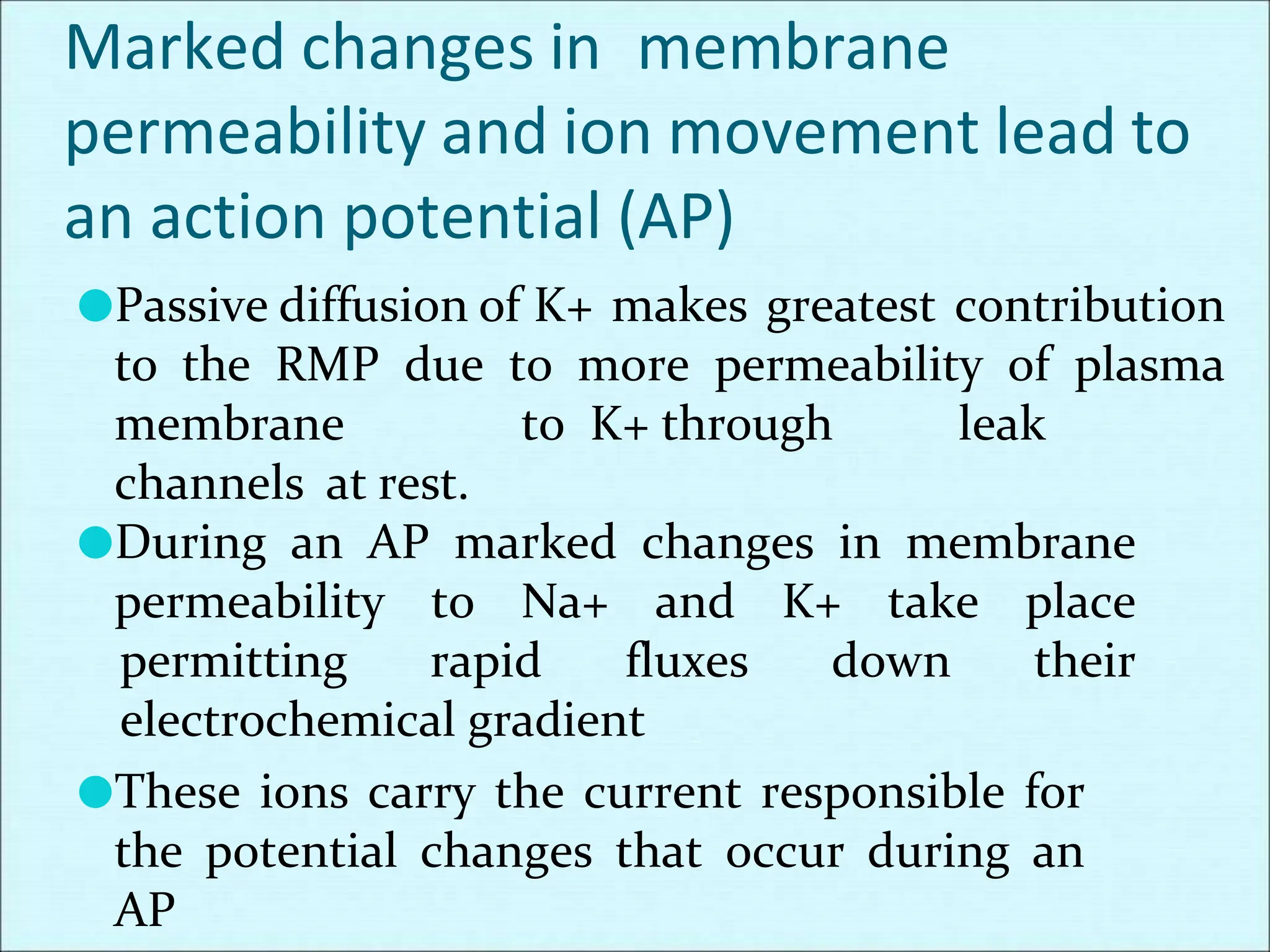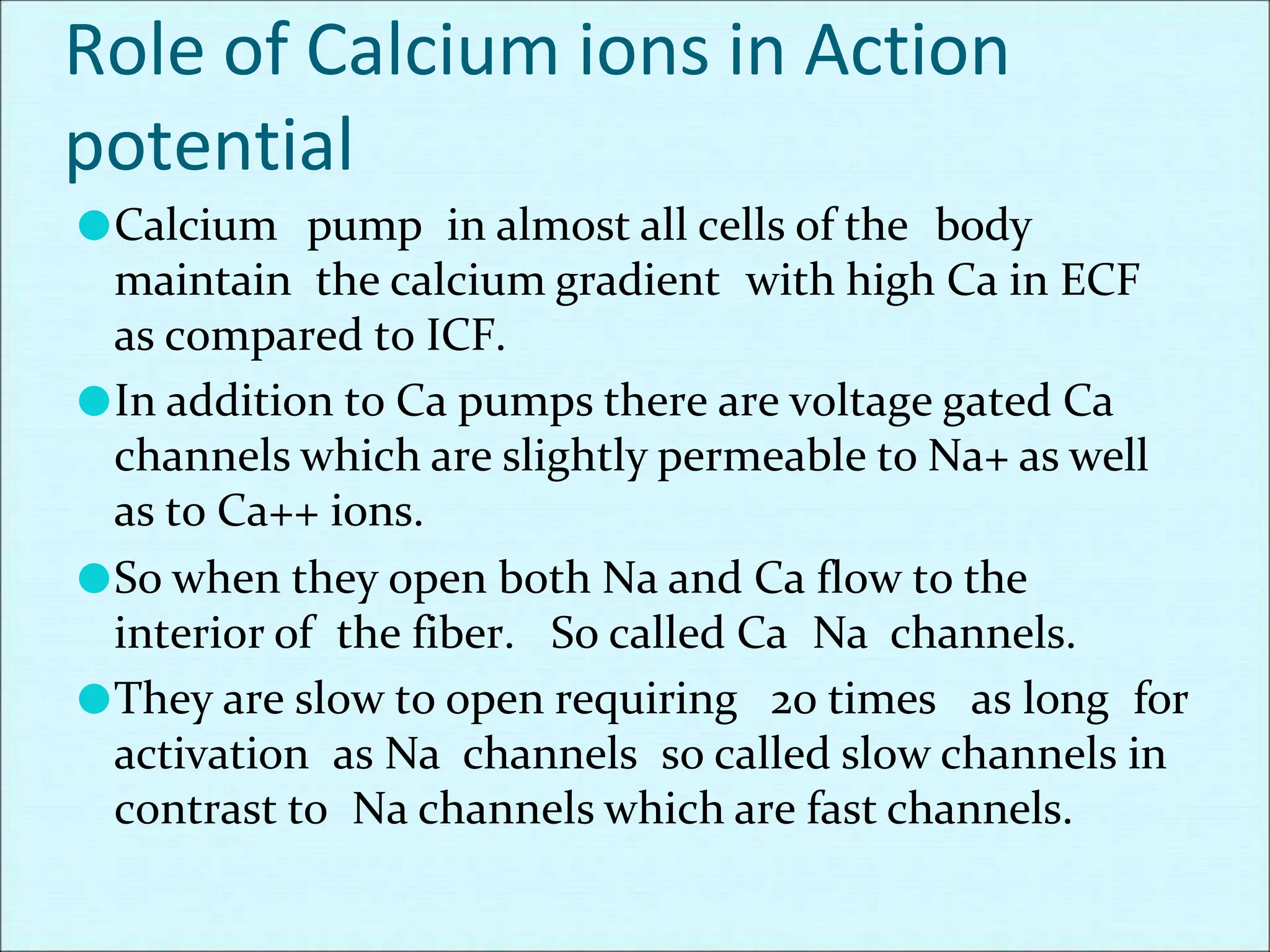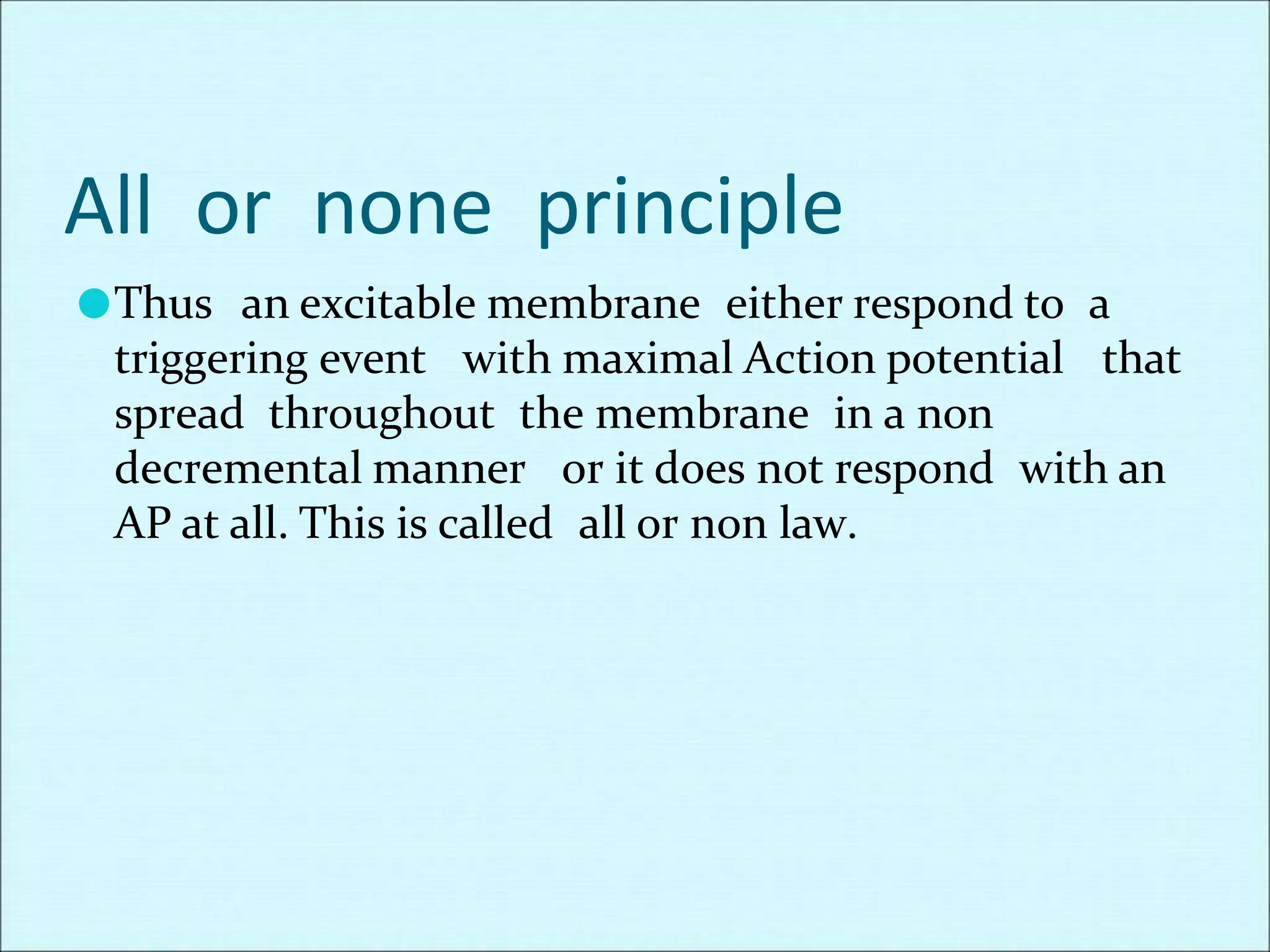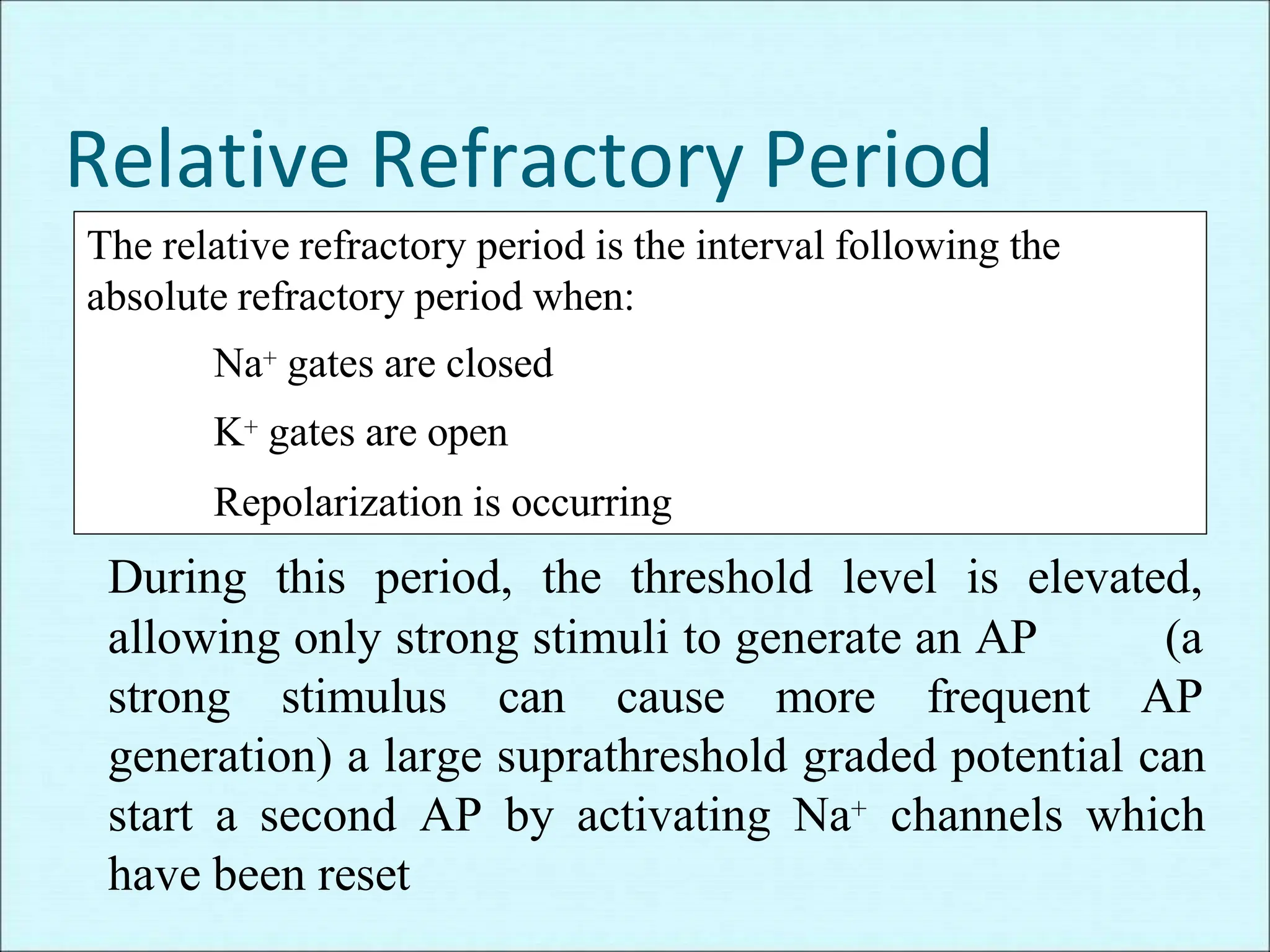Graded potentials are localized, short-lived changes in membrane potential that can vary in magnitude and are influenced by the strength and duration of stimuli. If these potentials are strong enough to reach a certain threshold, they can trigger action potentials, which are rapid and propagating changes in membrane potential essential for nerve impulses and communication. The document also discusses the role of ion channels in generating and propagating action potentials, the effects of myelination on conduction speed, and the significance of action potentials in physiological processes.




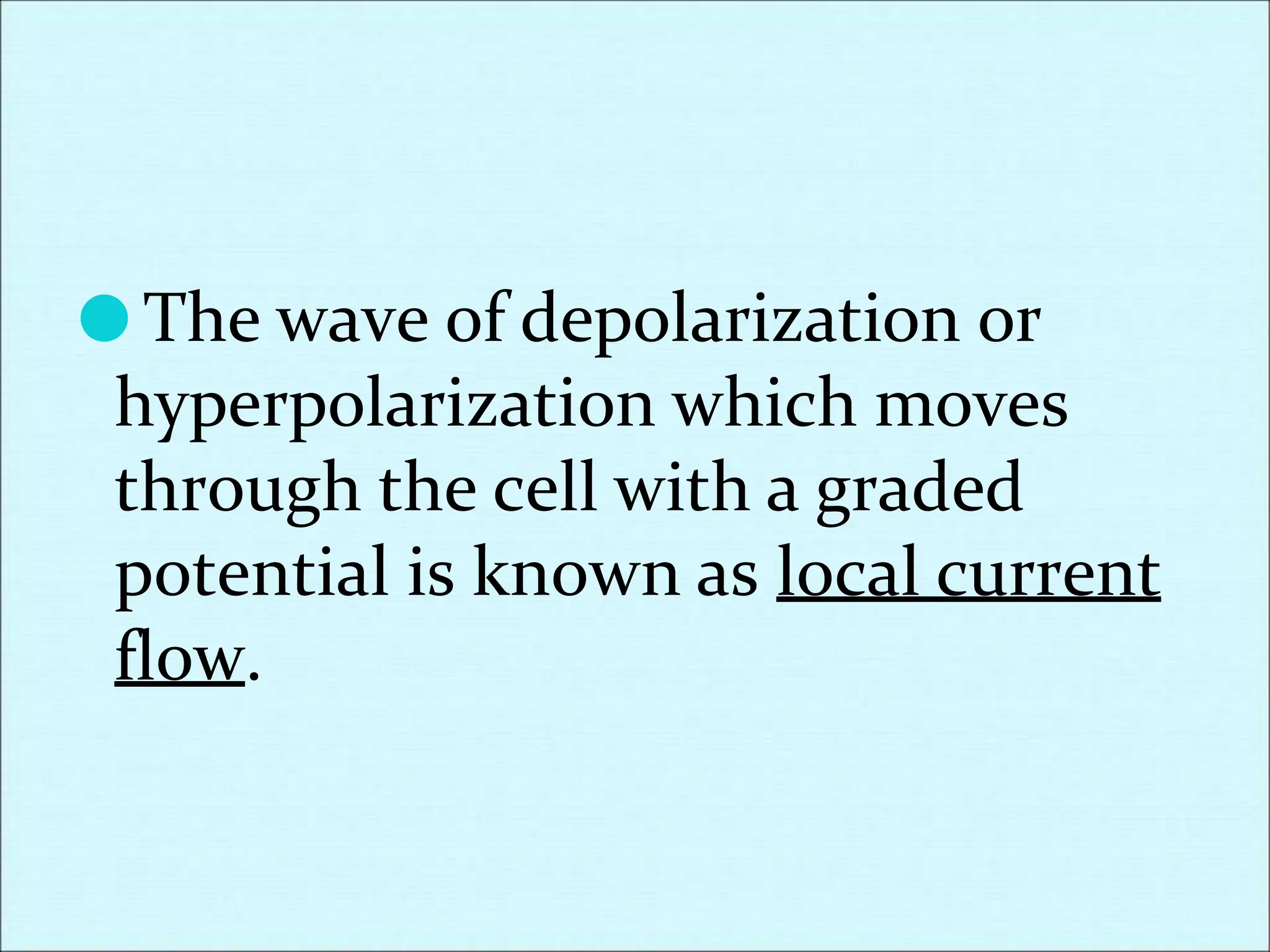











![Course of the Action Potential
●The action potential begins with a partial
depolarization [A].
●When the excitation threshold is reached there is
a sudden large depolarization [B].
●This is followed rapidly by repolarization [C] and
a brief hyperpolarization [D].
potential
(mV)
[A]
[B] [C]
[D] excitation threshold
Time (msec)
-70
+40
Membrane
0
0 1 2 3](https://image.slidesharecdn.com/gradedandactionpotential-240426150918-8a55a79b/75/Graded-and-Action-Potential-in-the-membrane-pptx-17-2048.jpg)
